constituent assembly of india debates (proceedings)- volume vii
constituent assembly of india debates (proceedings)- volume vii
constituent assembly of india debates (proceedings)- volume vii
You also want an ePaper? Increase the reach of your titles
YUMPU automatically turns print PDFs into web optimized ePapers that Google loves.
dated the 1st April 1937 <strong>of</strong> the Government <strong>of</strong> India in the External Affairs Department (Appendix B.<br />
page 130). All the costs <strong>of</strong> administration <strong>of</strong> the tracts are also borne by the Central Government and the<br />
Central Government are inclined to treat them as tribal areas within the meaning <strong>of</strong> Section 311 <strong>of</strong> the<br />
Government <strong>of</strong> India Act. On the other hand, the local <strong>of</strong>ficials treat the area as consisting <strong>of</strong> two parts.<br />
One which they call the Excluded Area and stretches up to the "Inner Line" boundary, and the Tribal<br />
Area, which by them is understood to mean the area beyond the "Inner Line" boundary. The "Inner Line"<br />
boundary is roughly along the foot <strong>of</strong> the hills and the area bounded by its occupied by a somewhat<br />
mixed population, while the hill portions beyond it are purely inhabited by the tribes. This treatment<br />
again does not appear to be strictly justifiable in law though it may be convenient to think <strong>of</strong> the<br />
administered plains portion <strong>of</strong> the area separately from the not fully administered hills. Since the frontier<br />
tracts are administered in practice by the Central Government as tribal areas, the absence <strong>of</strong> a<br />
notification under Section 60 <strong>of</strong> the Government <strong>of</strong> India Act, 1919, was regarded as an oversight. The<br />
position <strong>of</strong> these areas will be discussed further at a later stage, but it is clear from the foregoing that<br />
the Naga Tribal Area on the Eastern Frontier and the Balipara, Sadiya and Lakhimpur or Tirap Frontier<br />
Tracts on the North-Eastern Frontier fall under one category. The Balipara Frontier Tract which includes<br />
the Subansiri area is the tract over which there is as yet the smallest measure <strong>of</strong> control and<br />
administration. This tract and the Sadiya Frontier Tract are inhabited by tribes such as the Senjithonji,<br />
Dafla, Apa Tani, Momba (Balipara) the Abor, Mishmi, Hkampti (Sadiya). The Tirap Frontier contains<br />
Singphaws (who were originally Kachins) and a number <strong>of</strong> tribes classed as Nag a, while the Naga Tribal<br />
Area is largely inhabited by Nagas <strong>of</strong> the Konyak group. The policy on these Frontiers is to establish<br />
administration and control over the whole area right up to the frontier, and a five--year plan has been<br />
sanctioned by the Government <strong>of</strong> India. This plan mostly covers the Sadiya and Balipara Tracts but a few<br />
schemes <strong>of</strong> the Naga Tribal Area are also included in it. A separate plan for the development <strong>of</strong> the latter<br />
is under consideration.<br />
(b) The Excluded Areas. - The Excluded Areas <strong>of</strong> the Naga Hills District, the Lushai Hills District<br />
and the North Cachar Hills Sub-division fall within the second category <strong>of</strong> areas over which the Provincial<br />
Ministry has no jurisdiction whatever and the revenues expended in this area are not subject to the vote<br />
<strong>of</strong> the provincial legislature. The Naga Hills District is the home <strong>of</strong> a good number <strong>of</strong> tribes classed as<br />
Nag a, such as Angami, Ao, Sema, Lhota. Adjoining it is the Naga Tribal Area in the eastern portion <strong>of</strong><br />
which a good deal <strong>of</strong> head hunting still goes on. Though the tribes are all called Nag a, they speak<br />
different languages and have differing customs and practices also. The Lushai on the other hand, though<br />
consisting <strong>of</strong> a number <strong>of</strong> clans, are practically one people and speak a common language. The Kuki in<br />
the North Cachar Hills and else where are people <strong>of</strong> the same stock as Lushai or Mizo and speak the<br />
same language or a dialect. The Lushai Hills District except for an inappreciable number <strong>of</strong> Lakhers in the<br />
extreme south contains a uniform population. The North Cachar Hills, on the other hand, provide<br />
sanctuary for the Kachari, Nag a, Kuki, Mikir and Khasi. The largest <strong>of</strong> the tribes here are the Kachari<br />
and the villages <strong>of</strong> the different tribes, are more or less interspersed.<br />
(c) Partially Excluded Areas. - The third category is the Partially Excluded Areas consisting <strong>of</strong> the<br />
Khasi Hills District (British portion), the Garo Hills District and the Mikir Hills which fall in two districts,<br />
viz. Nowgong and Sibsagar, are administered by the Provincial Government subject to the powers <strong>of</strong> the<br />
Governor to withhold or apply the laws <strong>of</strong> the Provincial Legislature with or without modifications, or to<br />
make special rules. The Khasia, incidentally, are the only line <strong>of</strong> the tribes in this area who speak a<br />
Monkhmer language; all the other tribes speak Tibe to-Burmese languages. Generally speaking, they<br />
inhabit the areas which bear their names but there are villages outside these districts which also contain<br />
some <strong>of</strong> the tribes. Thus, the Garo inhabit a number <strong>of</strong> villages in the Mymensingh district <strong>of</strong> Bengal in<br />
addition to many villages in the districts <strong>of</strong> Kamrup and Goalpara in Assam. The Khasi population is not<br />
only to be found in the British portion <strong>of</strong> the Khasi and Jaintia Hills, but the States (which comprise a<br />
fairly large area) round about Shillong are inhabited by the Khasis. These States, twenty five in number,<br />
have the special feature that their chiefs are actually elected in a few cases by free election, though in<br />
the majority <strong>of</strong> cases the election is confined to a particular clan, the electorate consisting <strong>of</strong> Myntries <strong>of</strong><br />
the clan only in some states, by a joint electorate <strong>of</strong> Myntries and electors elected by the people in


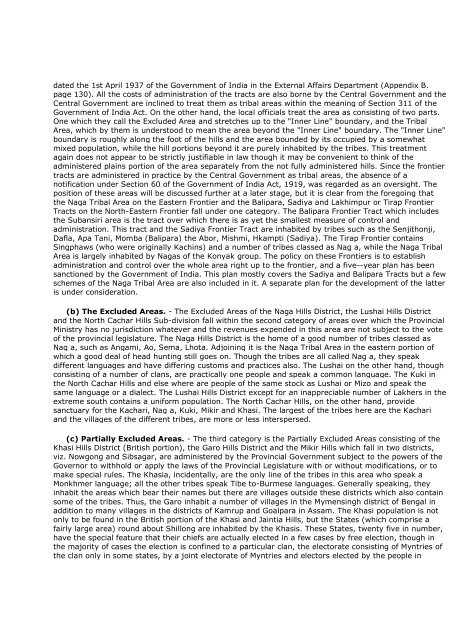
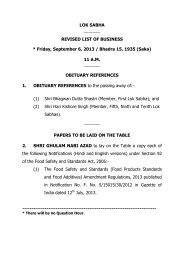
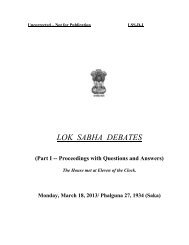

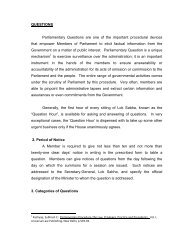
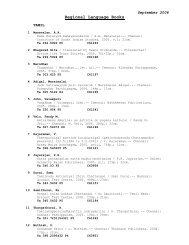

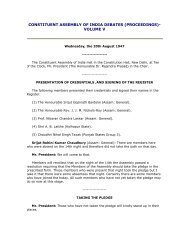
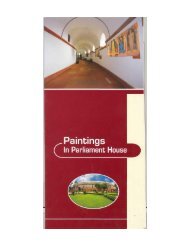
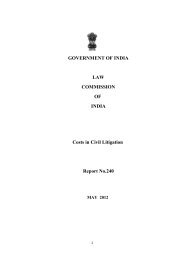
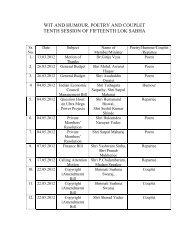
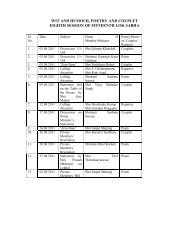

![gÉÉŌ A.]ÉŌ. xÉÉxÉÉ](https://img.yumpu.com/8015720/1/190x245/geeo-aeo-xeexee.jpg?quality=85)
